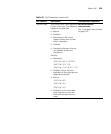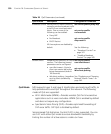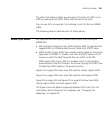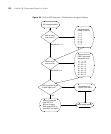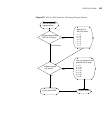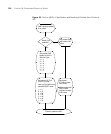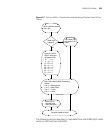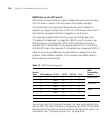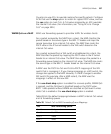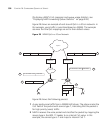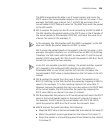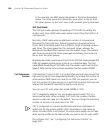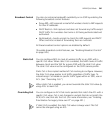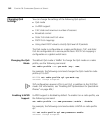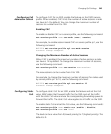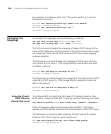
WMM QoS Mode 337
You also can use ACLs to override marking for specific packets. Configure
ACEs that use the dscp option to match on ingress DSCP value, and use
the cos option to mark CoS. A CoS value assigned by an ACE overrides
the internal CoS value. (For information, see “Using ACLs to Change
CoS” on page 399.)
WMM QoS on a MAP MAPs use forwarding queues to prioritize traffic for wireless clients.
For a packet received by the MAP from a client, the MAP classifies the
packet based on the service type in the 802.11 header and maps the
service type value to an internal CoS value. The MAP then marks the
DSCP value in the IP tunnel header to the WX switch based on the
internal CoS value.
For a packet received from a WX switch and addressed to a client, the
MAP classifies the packet by mapping the DSCP value in the IP tunnel
header to an internal CoS value. The MAP then assigns the packet to a
forwarding queue based on the internal CoS value. The MAP also marks
the service type in the 802.11 header based on the internal CoS value.
A MAP uses the DSCP-to-CoS and CoS-to-DSCP mappings of the WX
switch that is managing it. If you change mappings on a WX switch, the
change also applies to the MAP. Likewise, if a MAP changes to another
WX switch (for example, after a MAP restart), the MAP uses the
mappings in effect on the new WX.
If the use-client-dscp option is enabled for a service profile, WMM QoS
is ignored, and the QoS level is classified based on the DSCP value.
802.11 data packets without WMM are classified as QoS level 0 unless
static CoS is enabled or the use-client-dscp option is enabled.
Table 28 lists the default mappings between a MAP’s internal CoS values
and its forwarding queues.
Table 28 Default CoS-to-MAP-Forwarding-Queue Mappings
CoS MAP Forwarding Queue
1 or 2 Background
0 or 3 Best Effort
4 or 5 Video
6 or 7 Voice



